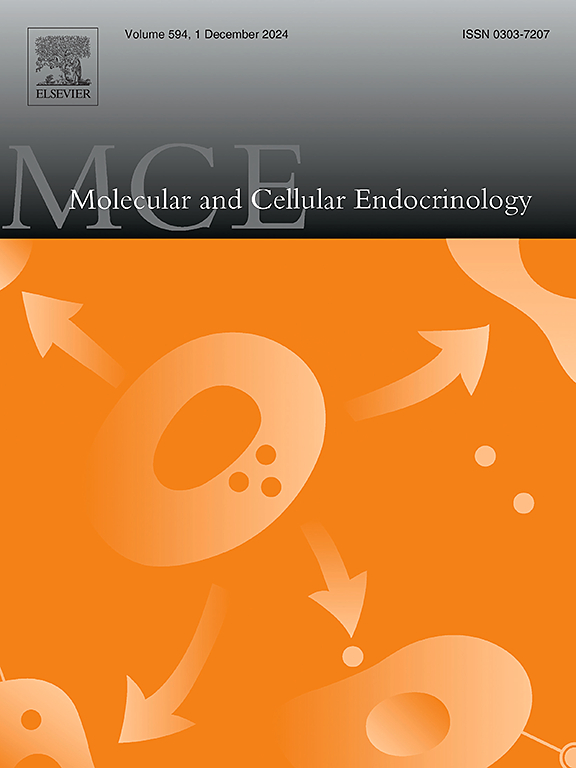多囊卵巢综合征的内分泌学研究。
IF 3.6
3区 医学
Q2 CELL BIOLOGY
引用次数: 0
摘要
多囊卵巢综合征(PCOS)是一种复杂的内分泌疾病,涉及多个内分泌轴的功能障碍,包括下丘脑-垂体-性腺(HPG)、下丘脑-垂体-肾上腺(HPA)和下丘脑-垂体-甲状腺(HPT)轴。本文从内分泌学的角度探讨多囊卵巢综合征的病理生理,强调多内分泌轴之间的复杂相互作用。我们已经讨论了HPG、HPA和HPT轴在PCOS中的作用。HPG轴的失调,尤其是促性腺激素释放激素脉冲频率的改变,导致促黄体生成素与促卵泡激素的比值升高,是多囊卵巢综合征(PCOS)中雄激素过多和无排卵的核心。我们进一步强调了HPA和HPT轴的作用,其中肾上腺雄激素水平升高和甲状腺功能减退加剧了多囊卵巢综合征的表型。此外,通常与多囊卵巢综合征相关的胰岛素抵抗和高胰岛素血症加重了激素紊乱,并增加了代谢并发症(如2型糖尿病和心血管疾病)的风险。抗本文章由计算机程序翻译,如有差异,请以英文原文为准。
An endocrinological perspective on polycystic ovarian syndrome
Polycystic ovarian syndrome (PCOS) is a complex endocrinological disorder that involves dysfunctions across multiple endocrine axes, including the hypothalamic-pituitary-gonadal (HPG), hypothalamic-pituitary-adrenal (HPA) and hypothalamic-pituitary-thyroid (HPT) axes. Our review focuses on understanding the pathophysiology of PCOS through an endocrinological perspective, emphasizing the complex interactions between multiple endocrine axes. We have discussed the roles of the HPG, HPA, and HPT axes in PCOS. Dysregulation of the HPG axis, particularly the altered gonadotropin-releasing hormone pulse frequency resulting in elevated ratio of luteinizing hormone to follicle stimulating hormone, is central to the hyperandrogenism and anovulation, observed in PCOS. We have further highlighted the contributions of the HPA and HPT axes, where elevated adrenal androgen levels and hypothyroidism intensifies the phenotypes of PCOS. Additionally, insulin resistance and hyperinsulinemia, commonly associated with PCOS, aggravates hormonal disturbances and heighten the risk of metabolic complications such as type 2 diabetes and cardiovascular diseases. Elevated levels of anti-Müllerian hormone have also been emphasized as a key factor in inhibiting follicular growth, leading to impaired ovarian function and hyperandrogenism. This review further supports that PCOS is a multifactorial condition involving complex feedback mechanisms between the endocrine, metabolic, and reproductive systems. Furthermore, there remains a huge scope for deciphering the precise molecular interactions between the HPG, HPA, and HPT axes in PCOS, which could pave the way for targeted therapies for better management of both the endocrine and metabolic aspects of this disorder. This review will benefit researchers to get an endocrine perspective on PCOS.
求助全文
通过发布文献求助,成功后即可免费获取论文全文。
去求助
来源期刊

Molecular and Cellular Endocrinology
医学-内分泌学与代谢
CiteScore
9.00
自引率
2.40%
发文量
174
审稿时长
42 days
期刊介绍:
Molecular and Cellular Endocrinology was established in 1974 to meet the demand for integrated publication on all aspects related to the genetic and biochemical effects, synthesis and secretions of extracellular signals (hormones, neurotransmitters, etc.) and to the understanding of cellular regulatory mechanisms involved in hormonal control.
 求助内容:
求助内容: 应助结果提醒方式:
应助结果提醒方式:


